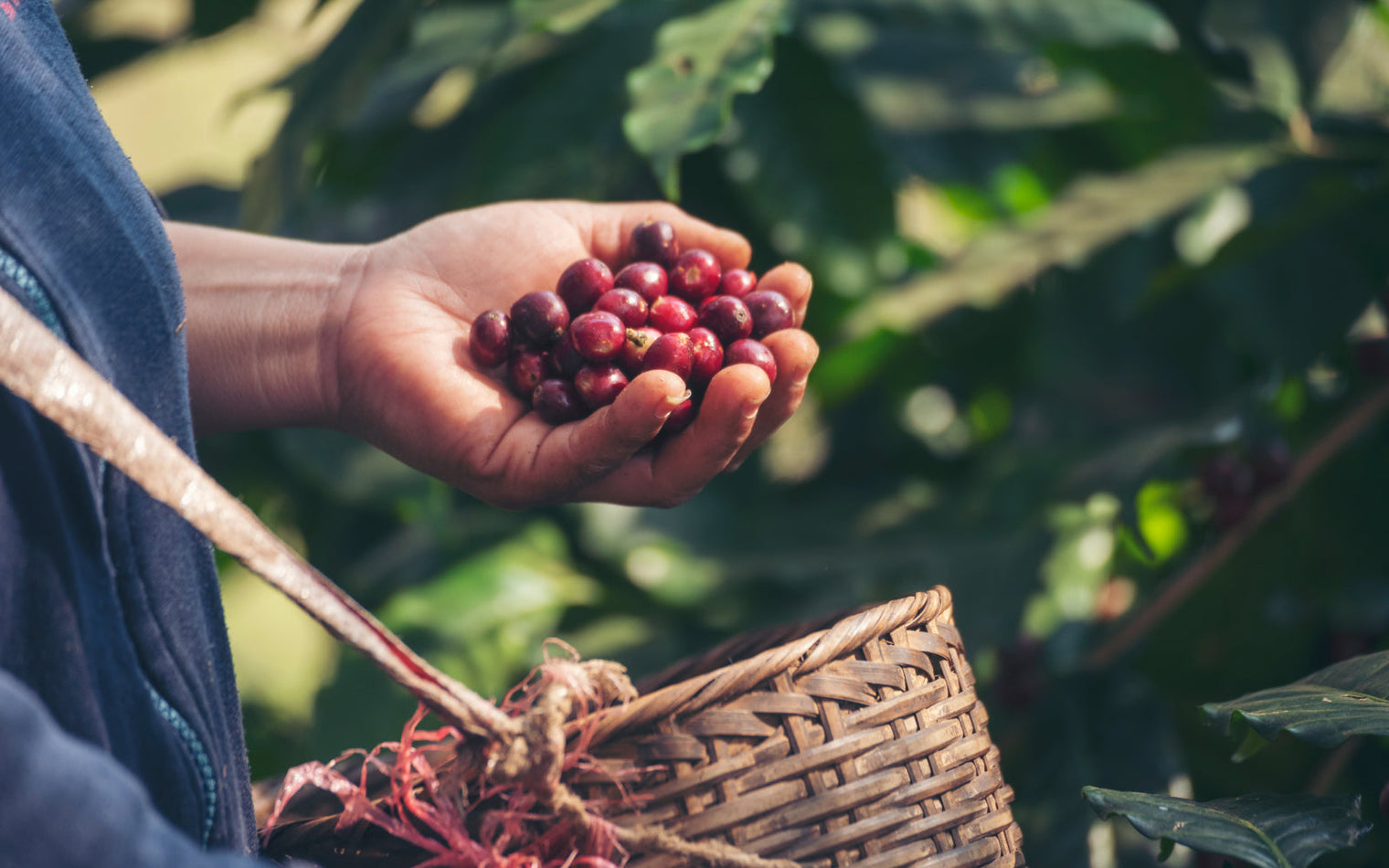From the coffee cherry to the bean – careful harvesting and processing determine the flavor of your coffee. Learn about the different methods, why hand-harvesting is the best choice, and how the beans are processed and transported after harvest.
From the coffee cherry to the bean: The art of coffee harvesting
The coffee journey begins long before it lands in your cup. The careful harvesting and processing of the coffee cherries are crucial for the aroma and quality of the finished coffee. In this article, you'll learn all about the different harvesting methods, processing, and their influence on the flavor.
The ripening process of the coffee cherries
The ripening period of coffee cherries varies depending on the growing region. For our Ethiopian highland coffees, it takes up to ten months. During this time, the cherries go through several color stages—from green to yellow to deep red. Only at this stage of ripeness are they ready for harvest.
Red cherries contain the fullest flavor, while unripe or overripe cherries can impair the taste. Green cherries have too many unripe acids, while overripe, black cherries develop a fermented flavor.
Harvesting methods: Care for the highest quality
Hand-picked harvest
Our coffee beans are picked exclusively by hand. This elaborate method ensures that only perfectly ripe cherries are harvested. Similar to fine wine, only the best quality is selected.
Since not all coffee cherries ripen at the same time, multiple harvests are required. This increases the labor required, but ensures that only the best beans end up in your cup.
Mechanical harvesting
In some regions, the harvest is done mechanically. This involves harvesting all cherries, regardless of ripeness. This results in lower quality, as both unripe and overripe cherries are processed.
From harvest to bean: Further processing
Further processing must begin within a few hours of harvest to prevent flavor loss due to fermentation. There are two main methods:
Wet processing
This method involves removing the pulp with water before the beans are fermented, washed, and dried. This method produces clean, fruity flavors.
Dry processing
This traditional method involves drying the cherries in the sun before removing the pulp. It gives the coffee a sweet, full-bodied character.
How the harvest influences the taste
Careful harvesting plays a crucial role in the coffee's flavor profile. Only ripe cherries deliver the complex aromas that characterize good coffee. Improper harvesting or excessive storage of the cherries can lead to undesirable flavors.
Storage and transport of coffee beans
After further processing, the dried beans (also called parchment coffee) must be safely stored. This is often done in jute bags or special containers to prevent moisture and unwanted flavors.
Transport is usually by ship, as coffee is a sensitive commodity. During the journey, the beans must be protected from temperature fluctuations to preserve their quality.
Frequently Asked Questions
Why is hand harvesting better than machine harvesting?
Hand-harvesting allows for the selective selection of ripe cherries, resulting in better flavor.
How does processing affect the taste?
Wet-processed coffee tastes fresher and fruitier, while dry-processed coffee has a sweet, full-bodied flavor.
How quickly does coffee need to be processed after harvest?
Within 5 hours to avoid unwanted fermentation.




